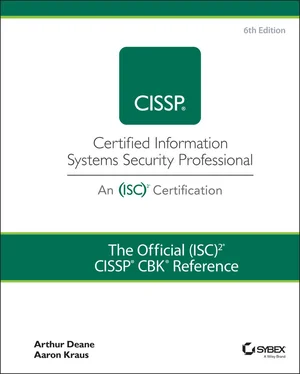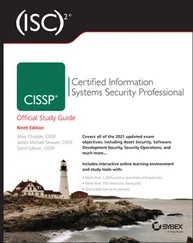The RiskIT framework consists of three domains — risk governance, risk evaluation, and risk response — each of which has three processes. The framework then details the key activities within each process and identifies organizational responsibilities, information flows between processes, and process performance management activities. Additional detail on how to implement the framework and link it to other organizational management practices is contained in the RiskIT Practitioner Guide.
UNDERSTAND AND APPLY THREAT MODELING CONCEPTS AND METHODOLOGIES
Threat modeling is a technique by which you can identify potential threats to your systems and applications, as well as identify suitable countermeasures against those threats. Threats may be related to overall system vulnerabilities or an absence of necessary security controls. Threat modeling is most often used during the application development phase, but you can also use threat modeling to help reduce risk in existing applications and environments.
The attack surface is the total range of areas where an attacker can potentially execute a compromise. With an information system, this might include the methods of communication, the access controls, or weaknesses in the underlying architectures. With a physical environment, the attack surface might include the construction techniques, the location, or the means of entrance and egress. Limiting the attack surface to the minimum number of areas of exposure reduces the opportunities for a threat to become a successful attack.
There are three general approaches to threat modeling. Different risk methodologies, compliance frameworks, or systems prefer one or another, but as a CISSP, you should be able to apply all three approaches to a particular environment. These approaches are attacker-centric, asset-centric, and software-centric (or system-centric), which are each covered in the following sections.
The attacker-centric threat modeling approach starts by identifying the various actors who could potentially cause harm to a system. With an attacker-centric approach, you start by profiling a potential attacker's characteristics, skillset, and motivation, and then use that profile to identify attackers who would be most likely to execute specific types of attacks. This approach can be helpful when narrowly approaching a problem by limiting the number of scenarios under analysis. Tactical military intelligence is typically driven by an attacker-centric threat model, as are many business continuity/disaster recovery planning processes. If you work in financial services, you may be familiar with attacker-centric modelling from anti-money laundering (AML) and other anti-financial crimes applications. AML processes involve using process models of how money launderers operate when they attack to identify steps to take in order to thwart such attacks.
As opposed to an attacker-centric approach, an asset-centric threat model identifies the assets of value first. Assets should be characterized by their value to the organization as well as their value to potential attackers. The means by which the asset is managed, manipulated, used, and stored are then evaluated to identify how an attacker might compromise the asset. Many compliance regimes focus on protection of an asset (e.g., PHI under HIPAA, PII under the GDPR, or cardholder data under PCI-DSS), so this approach is helpful when establishing or verifying compliance. You'll also find this approach particularly useful when protecting other high-value assets such as intellectual property and security credentials.
Software-centric (or System-centric)
For many information systems environments, the software- or system-centric model is most useful. In this approach, the system is represented as a set of interconnected processes, using architecture diagrams such as dataflow diagrams (DFDs) or component diagrams. These diagrams are then evaluated by threat analysts to identify potential attacks against each component and to determine whether a security control is necessary, exists, and achieves the control effect.
Threat Modeling Methodologies
There are many different threat modeling methodologies. Some of the most important methodologies are STRIDE, PASTA, NIST 800-154, and DREAD — we discuss each of these in the following sections.
STRIDE is a threat modeling methodology developed by Microsoft in the late 1990s to help identify and classify computer security threats. The name itself is a mnemonic for six categories of security threats, discussed here:
Spoofing: Spoofing is an attack during which a malicious party assumes the identity of another party (either a user or a system) by falsifying information. A common example of identity spoofing occurs when email spammers modify the “From:” field to depict the name of a sender that the target recipient is more likely to trust. Within applications, spoofing can occur if an attacker steals and uses a victim's authentication information (like username and password) to impersonate them within the application.
Tampering: Data tampering is an attack on the integrity of data by intentionally and maliciously manipulating data. Tampering can include altering data on disk, in memory, over the network, or elsewhere. Applications that don't properly validate user input may allow malicious actors to modify values and have the manipulated data stored and used by the application.
Repudiation: Repudiation is the ability of a party to deny that they are responsible for performing an action. The threat of repudiation occurs when a user claims that they did not perform an action, and no other party is able to prove otherwise. In the physical world, signing for a mail delivery is a common form of nonrepudiation — the delivery company maintains a record that you received and accepted the mail on a specific date. In the digital world, an example of a repudiation threat is a user claiming that they did not make an online purchase — even if they did, in fact, make that purchase. Comprehensive logging, digital signatures, and multifactor authentication can be integrated into applications to provide nonrepudiation for high-risk actions.
Information disclosure: Information disclosure is when information is shared with an unauthorized party — such as during a data breach or when inadvertently sending an email to the wrong person. This threat compromises the confidentiality of data and carries a great deal of risk depending on the sensitivity of the leaked data. Organizations that store and process PII, PHI, cardholder data, or other confidential information should focus on this threat, and identify controls to mitigate against it. Data encryption, strong access control, and other data protection mechanisms are the keys to protecting against unauthorized information disclosure.
Denial of service: A denial-of-service (DoS) attack is a common availability attack that denies access to resources by legitimate users. Controls should be put in place to monitor and detect abnormally high resource consumption by any single user; this may be an indication of either malicious or unintentional resource exhaustion. As a principle, applications should be developed with availability and reliability in mind.
Elevation of privilege: Elevation of privilege (or privilege escalation) occurs when an unprivileged user is able to upgrade their privileges to those of a privileged user (e.g., a system administrator). Elevation of privilege can give an untrusted party the “keys to the kingdom” and grant them access to and control over sensitive data and systems. Strong access control is required to help protect against this threat. Systems should revalidate a user's identity and credentials prior to granting privileged access, and multifactor authentication should be used, wherever possible.
Читать дальше












